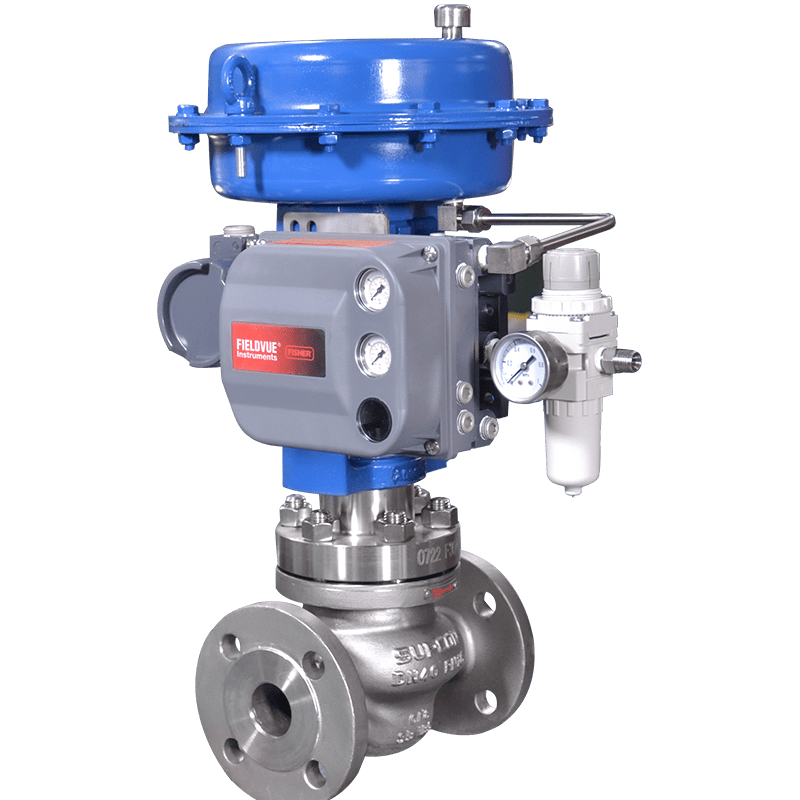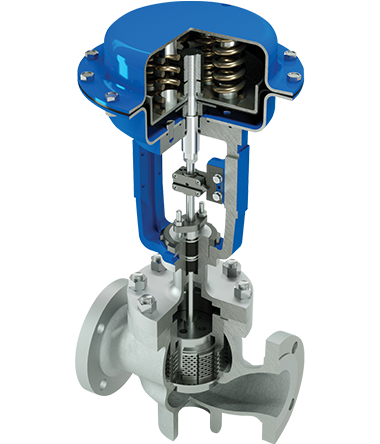
Pneumatic control valves are essential components in various industrial systems, playing a crucial role in regulating the flow of air or gas. These valves, also known as directional control valves, are used to switch the flow on and off or to regulate it according to the system's requirements. Given their importance, maintaining pneumatic control valves is vital to ensure the efficiency, reliability, and longevity of the entire pneumatic system. This article provides a detailed guide on how to maintain pneumatic control valves, covering passive, preventive, and predictive maintenance strategies, as well as addressing common issues such as valves that won't close.
A pneumatic control valve is a device that controls the flow of air or gas in a pneumatic system. These valves can be used to switch the flow on and off or to regulate the flow, making them indispensable in various industrial applications. Pneumatic control valves are known for their reliability, simplicity, and ability to operate in harsh environments. However, like any mechanical device, they require regular maintenance to function optimally.

Maintaining pneumatic control valves involves a combination of passive, preventive, and predictive maintenance strategies. Each approach has its own set of practices and benefits, contributing to the overall health and performance of the valve.
Passive maintenance, also known as reactive maintenance, involves addressing issues as they arise. When a pneumatic control valve fails, it is essential to conduct a thorough overhaul to identify the cause of the fault and perform timely repairs. This approach is crucial for minimizing downtime and preventing further damage to the system.
Overhauling the Valve: When a failure occurs, the regulating valve should be disassembled and inspected to identify the root cause of the problem. Common issues include worn-out components, debris accumulation, and seal failures. Once the cause is identified, the necessary repairs or replacements should be carried out promptly.
Timely Repairs: Addressing issues as soon as they are detected is crucial for preventing minor problems from escalating into major failures. Regular inspections and prompt repairs can significantly extend the lifespan of the valve and ensure the smooth operation of the pneumatic system.
Preventive maintenance involves regular, scheduled activities aimed at preventing failures before they occur. This proactive approach helps maintain the valve's performance and reduces the likelihood of unexpected breakdowns.
Regular Cleaning: Keeping the control valve clean is essential for its proper functioning. Regular cleaning helps prevent the accumulation of dirt, debris, and other contaminants that can interfere with the valve's operation. Ensure that the valve and its components are kept in hygienic condition.
Pipeline Flushing: Regularly flushing the pipeline helps remove any blockages or debris that may have accumulated over time. This practice is particularly important in systems where the air or gas may carry particulate matter that can clog the valve.
Inspection of Fixed Joints: Regularly check the fixed joints of the control valve to ensure they are secure and free from corrosion. Corrosion can weaken the joints and lead to leaks or failures. Applying appropriate lubrication can help prevent corrosion and ensure smooth operation.
Installation Considerations: Proper installation is crucial for the longevity of the control valve. Avoid hard bending during installation, as it can cause stress and deformation. Maintain an appropriate distance between the regulator valve and the compressor to minimize vibration, which can lead to wear and tear.
Lubrication: Regularly add lubricating oil to the packing to ensure smooth operation and prevent leaks. Proper lubrication reduces friction and wear, extending the valve's lifespan.
Predictive maintenance involves using advanced tools and techniques to monitor the condition of the control valve and predict potential failures before they occur. This approach allows for timely intervention and reduces the risk of unexpected breakdowns.
Smart Meters and Diagnostic Devices: Utilize smart meters or other diagnostic devices to obtain real-time information about the control valve's operation. These devices can provide valuable insights into the valve's performance, helping to identify potential issues early.
Enhancing Regulating Quality: By analyzing the data collected from diagnostic devices, you can enhance the regulating quality of the control valve. This involves fine-tuning the valve's settings to ensure optimal performance and efficiency.
Diagnostic Functions: Smart meters and diagnostic devices can perform diagnostic functions to identify problems within the control valve. Early detection of issues allows for timely maintenance and prevents minor problems from escalating into major failures.
Intelligent Valve Positioners: Increase the development and use of intelligent valve positioners, which can provide precise control and monitoring of the valve's position. These devices can enhance the valve's performance and provide valuable data for predictive maintenance.
One common issue with pneumatic control valves is that they may remain stuck in the open position, allowing air or gas to flow freely through the system. This can lead to inefficiencies and potential damage to the process or equipment.
Debris Accumulation: The most common reason for a valve getting stuck in the open position is debris caught in the line. Clearing the debris typically resolves the issue. Regularly inspect and clean the supply line filters to prevent debris from entering the system.
Inspection and Replacement: If debris is found in the line, inspect the supply line filters and replace any worn-out or damaged elements. Ensuring that the filters are in good condition helps prevent debris from reaching the valve and causing blockages.
Maintaining pneumatic control valves is essential for ensuring the efficiency, reliability, and longevity of pneumatic systems. By implementing a combination of passive, preventive, and predictive maintenance strategies, you can keep your control valves in optimal condition and prevent unexpected failures. Regular cleaning, pipeline flushing, inspection of fixed joints, proper installation, and lubrication are key preventive maintenance practices. Utilizing smart meters and diagnostic devices for predictive maintenance can help identify potential issues early and allow for timely intervention. Addressing common issues such as valves that won't close by clearing debris and inspecting supply line filters further ensures the smooth operation of your pneumatic system.
In conclusion, a well-maintained pneumatic control valve not only enhances the performance of your system but also reduces downtime and maintenance costs. By following the maintenance practices outlined in this guide, you can ensure that your pneumatic control valves operate efficiently and reliably, contributing to the overall success of your industrial processes.